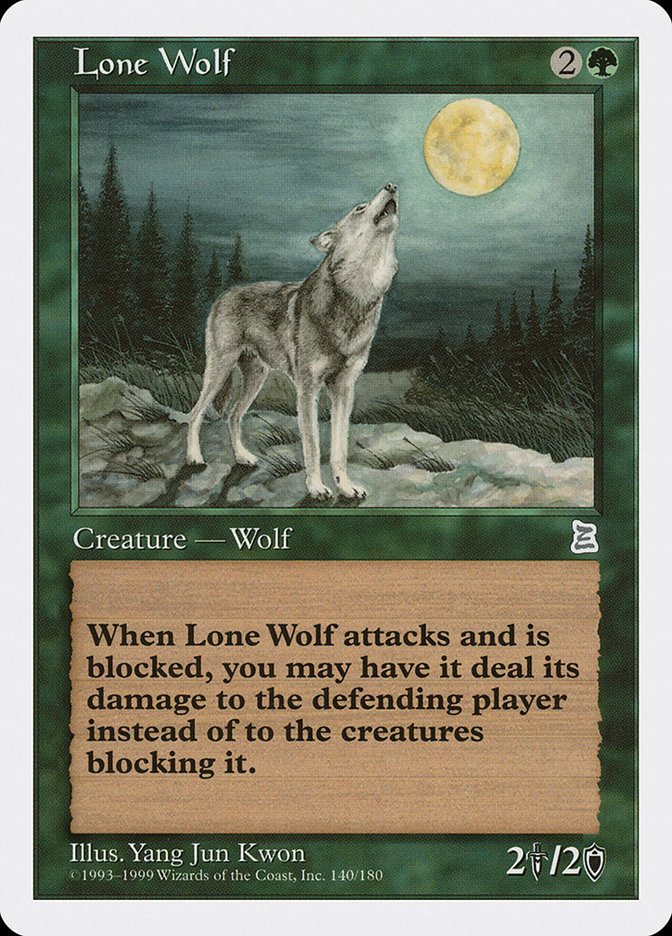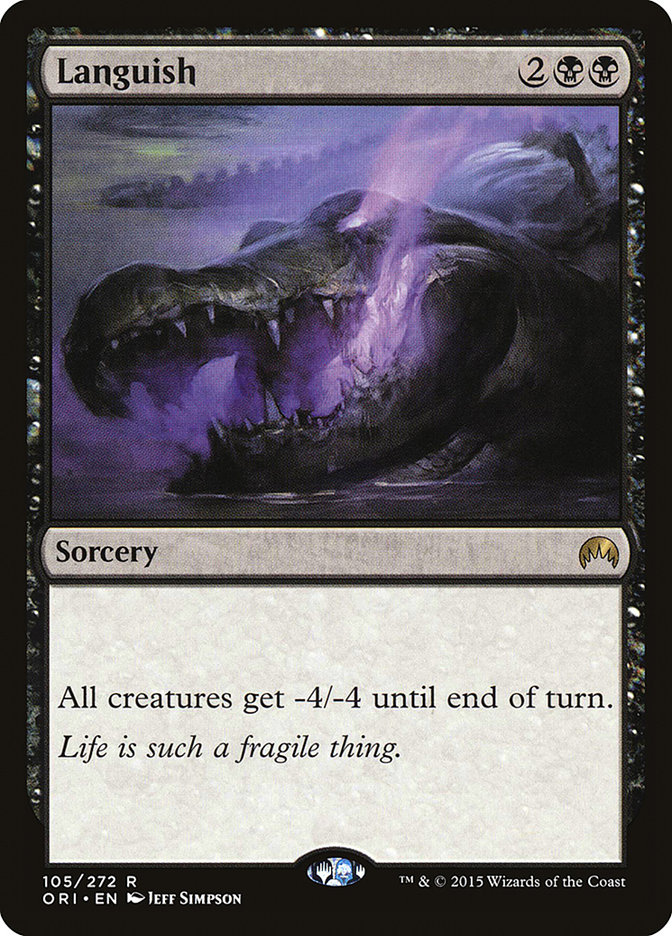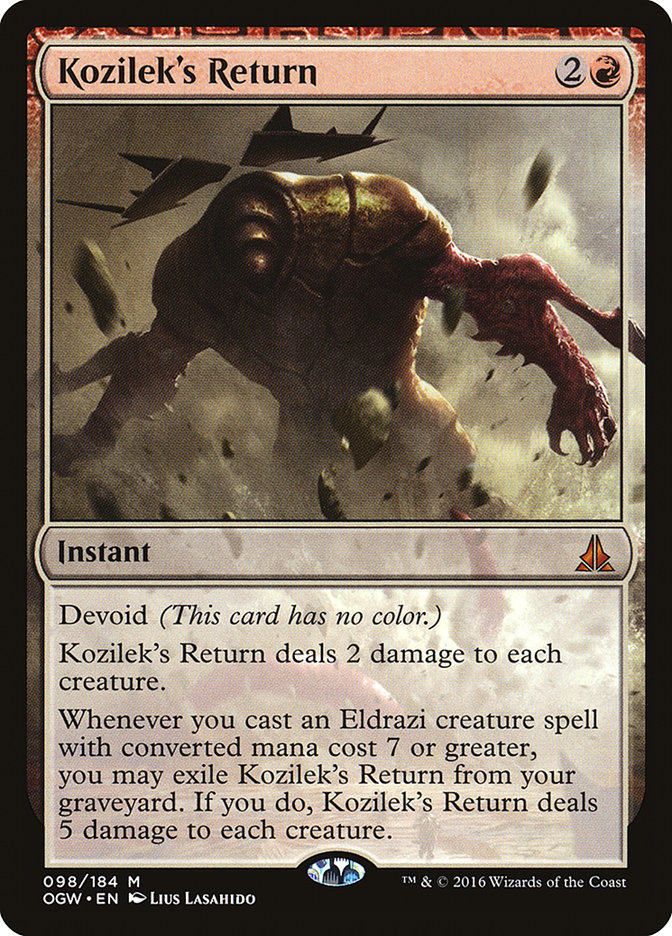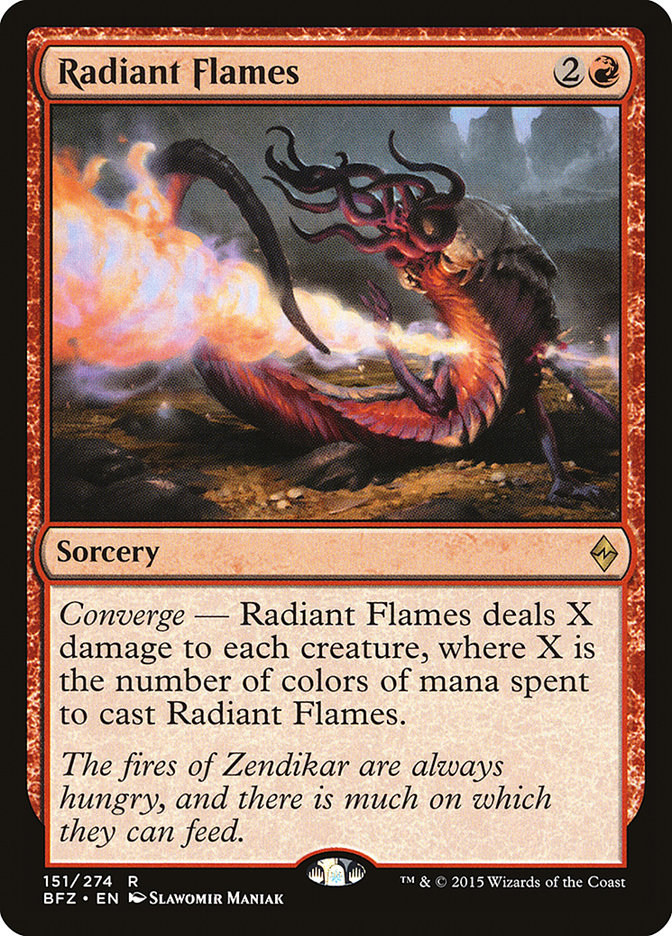 been plagued by a series of poor decisions, and I thought playing Humans would alleviate at least one of them. I wanted it to be more like Pro Tour San Juan (Rise of the Eldrazi), but instead, it was more like Pro Tour Barcelona (Avacyn Restored).
been plagued by a series of poor decisions, and I thought playing Humans would alleviate at least one of them. I wanted it to be more like Pro Tour San Juan (Rise of the Eldrazi), but instead, it was more like Pro Tour Barcelona (Avacyn Restored).
Now that I think about it, I don’t think I’ve ever had a good tournament in Europe. Strange.
As always, my story started well before the Pro Tour even began. My last team dissolved, but I was very motivated to continue working with Brad Nelson and/or Michael Majors. With both of them splitting up, I decided to try to join Team East West Bowl, which Majors aligned himself with. I had #SCGBALT and #SCGINVI to play in, so I didn’t want to spend two weeks testing for the Pro Tour. They’re a team that tests primarily online, plus I really like Andrew Brown, so it seemed like the best fit for me.
Unfortunately for me (or fortunately, depending on how you look at it), they declined. That left me to work alone, but I was fine with that. I figured that the real-life tournaments would give me some insight, plus I had Magic Online to rapid-fire some drafts before I left for the Pro Tour. I kinda wanted to “lone wolf” it up in order to see what I could accomplish on my own anyway.
Here are my rules about Pro Tours:
Rule #1: Aggro Is a Good Choice at Pro Tours.
If you don’t know what people are going to play or how they’re going to react to the metagame, aggro is a fine backup plan. “Be proactive” is something people say all the time, and that’s because you don’t have to worry about whether or not you got the details right.
Rule #2: Pure Control Is a Poor Choice at Pro Tours.
You can peg the metagame, but you’ll never know how effective Cancel will be, how much you want to slant your deck to win the control mirror, or how much removal you should play maindeck. Those are all questions you could answer with perfect information, but if you’re going in blind, it’s a fool’s errand.
Sure, you could guess correctly or get the right matchups, but is that really what you want to stake your tournament on?
This Pro Tour was one of the most aggressive I’ve seen. Control put three people into the Top 8, but it seemed like they were the outliers from teams that otherwise performed poorly. If Languish and Radiant Flames were going to do well in any Pro Tour, it should have been this one.
Rule #3: Play Something Solid.
In other words, don’t play something flimsy. Ideally, your deck mulligans well, doesn’t require anything specific in its opening hand, and isn’t reliant on any one thing. Your card quality should be high so that your topdecks are potent.
Rule #4: The Metagame Isn’t as Difficult to Pin Down as You Think.
If Bant Company appears to be far and away the best deck, you will likely see a lot of it at the Pro Tour. Some people can’t find anything better and some people are content playing the best deck. Past that, there are many people who will try to beat the best deck, and those strategies are relatively obvious.
Rule #5: People Don’t Go Overboard Very Often; When They Do, It’s Often a Mistake.
Basically, don’t level yourself.
The Japanese used to be heralded as players who built decks to crush the Day 2 metagame of the Pro Tour. Realistically, they could either be on Level 0 or Level 3, but you have no way of knowing that.
Steve Rubin and Jon Finkel are two examples of players who succeeded despite having a poor matchup against Bant Company. However, they were also part of big teams with players that didn’t replicate their success, likely because they had worse pairings (or a worse record in Draft). However, if your goal is to win the tournament, you might want to bank on beating the decks that beat the best deck. After all, if you’re at the top of the standings, you probably won’t find too many of Public Enemy #1 up there with you.
Realistically, though, you’re not going to find too many matchups of decks that beat the deck that beat the best deck, so there’s no point in going too deep.
Rule #6: Don’t Be the Fish.
There are times when playing the deck with a target on its head is a bad idea. Then there are times when playing the deck with a target on its head is actively a good idea, at least if you can find a way to shift the matchup paradigm.
At #SCGINVI, I did just that. My Bant Company and Humans mirrors were no longer about assembling the biggest, best battlefield position. They’d side in things like Lantern Scout to stem the bleeding. Meanwhile, I wouldn’t even worry about attacking their life total, because I knew that route to victory was something they were actively trying to close off.
Instead, I drew some cards with Bygone Bishop, used Tragic Arrogance to wipe their battlefield, and used my newfound riches to rebuild. Collected Company into a Lantern Scout? You got it!
For #PTSOI, I had a similar plan against decks that were trying to sweep away my creatures multiple times, and that plan was Gideon, Ally of Zendikar.
Creatures (28)
- 4 Knight of the White Orchid
- 2 Dragon Hunter
- 2 Kytheon, Hero of Akros
- 2 Consul's Lieutenant
- 4 Reflector Mage
- 2 Archangel Avacyn
- 4 Thraben Inspector
- 4 Thalia's Lieutenant
- 4 Town Gossipmonger
Planeswalkers (2)
Lands (22)
- 13 Plains
- 1 Island
- 4 Prairie Stream
- 4 Port Town
Spells (8)
Sideboard

If you’re looking for some additional input on the deck and a sideboarding guide, Michael Majors has you covered.
Following my 2-1 record in Draft, my rounds went as followed:
Round 4: Languish.
I lost.
There were two spots in Game 2 where I legitimately felt like I threw away the game.
Round 5: Kozilek’s Return.
I won.
Easy game. Deck’s great, I’m great, etc.
Round 6: Kozilek’s Return.
I lost.
Round 7: Collected Company.
Hey, I’m actually prepared for this one!
Oops, I still lost.
Round 8: Languish and Radiant Flames.
I lost.
Conversely, Michael Majors went 8-2 in Standard with the same 75. He even went so far as to say his two match losses were likely punts. That’s quite the stark contrast in results. So what was the difference?
He said his opponents conceded to Dragonlord Ojutai plus Always Watching. His Gideons never died, and instead ruled the battlefield. From my side of things, I never drew Dragonlord Ojutai and my Gideons immediately met a Ruinous Path.
Those are the breaks, I guess?
Realistically, I don’t think it’s as simple as “I got unlucky.” My opponents certainly did a better job picking apart my draws at the Pro Tour than at #SCGINVI. While my attempted strategy of beating up on Bant Company and decks that were trying to beat it was solid, my actual deck choice was likely incorrect.
I also could have gone farther down the path of trying to cement my matchup against decks that were trying to beat me with sweepers. Invasive Surgery is a card that comes to mind, but ultimately one that I dismissed because of how narrow it is. It doesn’t counter Pyromancer’s Goggles or Chandra, Flamecaller, so I thought the slightly more expensive Negate would be enough.
The true answer is that I probably should have had both! If you look at the top performing decks from #PTSOI, the Bant Company and W/U Humans decks that did well often had seven counterspells in their sideboards. It may seem like an overreaction, but given the metagame, it was likely correct.
Many fellow Pro Tour competitors questioned why I splashed in my Humans deck (and many of those people were rather condescending, which added to an already poor weekend), but the real reason is because of the existence of the cards and strategies that I played against. Boss Humans doesn’t really have a sideboard. On the other hand, W/U Humans has an excellent sideboard, although to be fair, I’m still not sure what the best plan for Bant Company should be.
Against decks with Kozilek’s Return, Languish, and Radiant Flames, you can pace your threats more than Boss Humans can. You can defend with countermagic. You can also assemble the Always Watching / Dragonlord Ojutai combo.
Playing a higher land count gives you access to Gideon, Ally of Zendikar. Reflector Mage often feels like drawing two spells, unlike a topdecked Anointer of Champions.
I had my reasons. Given what I expected the metagame to look like, Boss Humans did not look like a great choice. With W/U Humans, I thought I had enough tools to level people.
Here’s what I probably should have done instead:
1) Stick with aggro, but build it in such a way that each of the cards were good individually instead of relying on synergy. Always Watching and Thalia’s Lieutenant are excellent cards, but not when all of your creatures die. Den Protector and Tireless Tracker were better cards for this Pro Tour, and I knew that was probably going to be the case.
Something like this probably would have been nice:
Creatures (24)
- 4 Knight of the White Orchid
- 4 Den Protector
- 3 Deathmist Raptor
- 2 Anafenza, Kin-Tree Spirit
- 2 Nissa, Vastwood Seer
- 4 Sylvan Advocate
- 2 Bygone Bishop
- 3 Tireless Tracker
Lands (23)
Spells (13)

Ulvenwald Mysteries was a card I was particularly interested in playing.
2) Consider how people were going to react to the metagames of #SCGBALT and #SCGINVI. Obviously Languish is the next place to go, and I anticipated that, but could I have done more? Majors, Todd, and I were talking during #SCGINVI and we came up with R/G Goggles, but ultimately didn’t put any work into it.
There’s a time and a place for brewing, but in this case, it wasn’t three days before I left for the Pro Tour. I had work to get caught up on, I had to teach myself how to Draft, and I was only one person. There was only so much time, and I had to use it wisely.
3) Listen to my gut. When I’m panicking the night before the Pro Tour, there’s probably a reason for that. When I have an urge to build a W/G version of the deck I’ve been playing, there is probably a reason for that. When I note that Pyromancer’s Goggles plus World Breaker could form a powerful shell, there’s probably a reason for that.
Since I was working by myself, I wanted to keep things simple. After all, that’s how I thought I should operate anyway. It felt like a blessing to have a deck locked in for the Pro Tour a week beforehand. I don’t think I’ve ever had that happen.
The reality is that there are times to keep it simple and there are times where the world is moving so quickly around you, possibly in reaction to a certain thing, that you need to move too. This was a unique situation and one that I’ll need to add into the equation in the future.
Going Forward
I wouldn’t play W/U Humans right now. It looks like Standard is shaping up to be a midrange grindfest again. Early reports indicate that LSV’s G/B deck, Brad Nelson’s Goggles Ramp, and Steve Rubin’s G/W Tokens are the early favorites. You can’t discount Bant Company either. Boss Humans will remain in some form or another, and I imagine that Finkel’s B/G Control will have some fans as well.
One thing to note is that I don’t think Brad’s 0-3 loss to Steve Rubin was indicative of anything. That matchup is close, and I’m sure each deck will evolve, but don’t shy away from R/G Goggles just because of Brad’s match.
Grand Prix “New York” is my next Standard event, so hopefully I’ll be able to crack it. I’ve made each Grand Prix count so far, and I don’t intend to slow down. This weekend, I’ll be at #SCGMKE playing some Modern. Once again, I find myself in the precarious position of needing to find a deck to play with time running out.
Grixis Control, perhaps?
“Watch Me”
I told a friend of mine that the Pro Tour isn’t easy, but it’s doable, and that I was determined to make it happen. After #PTORI, I thought I had it figured out. I went deep in a Pro Tour for the first time in forever, but apparently that was an isolated incident. My Constructed record wasn’t even good in that tournament!
While I’ve gone from zero to Gold in a short period of time, I haven’t demonstrated any sort of mastery on the Pro Tour this year (at least as far as Constructed is concerned). With other tournaments, I get in the reps, but the Pro Tours are so few and far between that I refine my process very slowly. With tournaments like the SCG Tour®, I can reasonably approximate how well I would do if I were able to run the tournament back a hundred times. With each Pro Tour, I have no idea, and this one is no exception.
Magic is difficult and continually reminds me of that, which is most of the reason I stick with it. One of these days, I’ll figure out a process for finding Pro Tour success.







